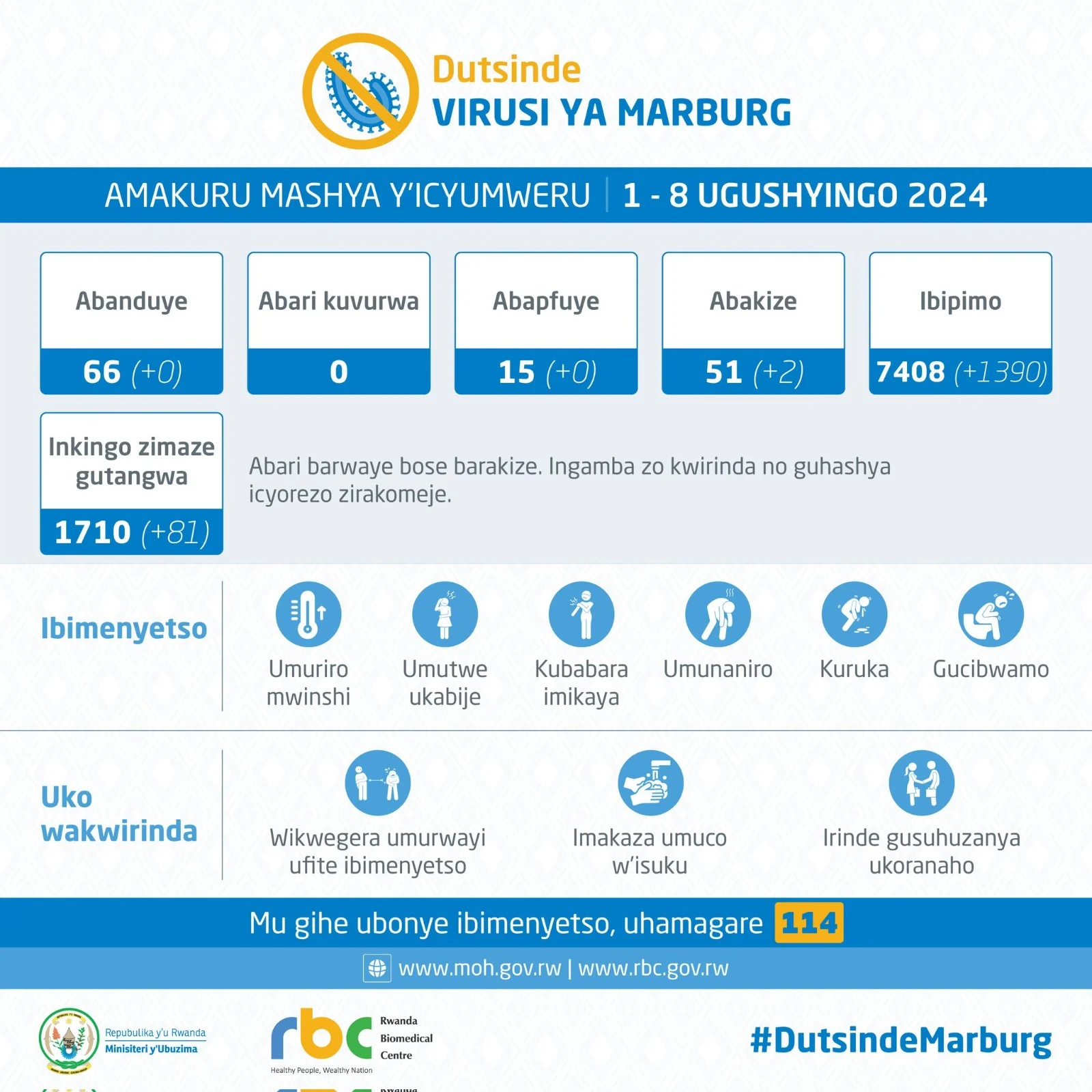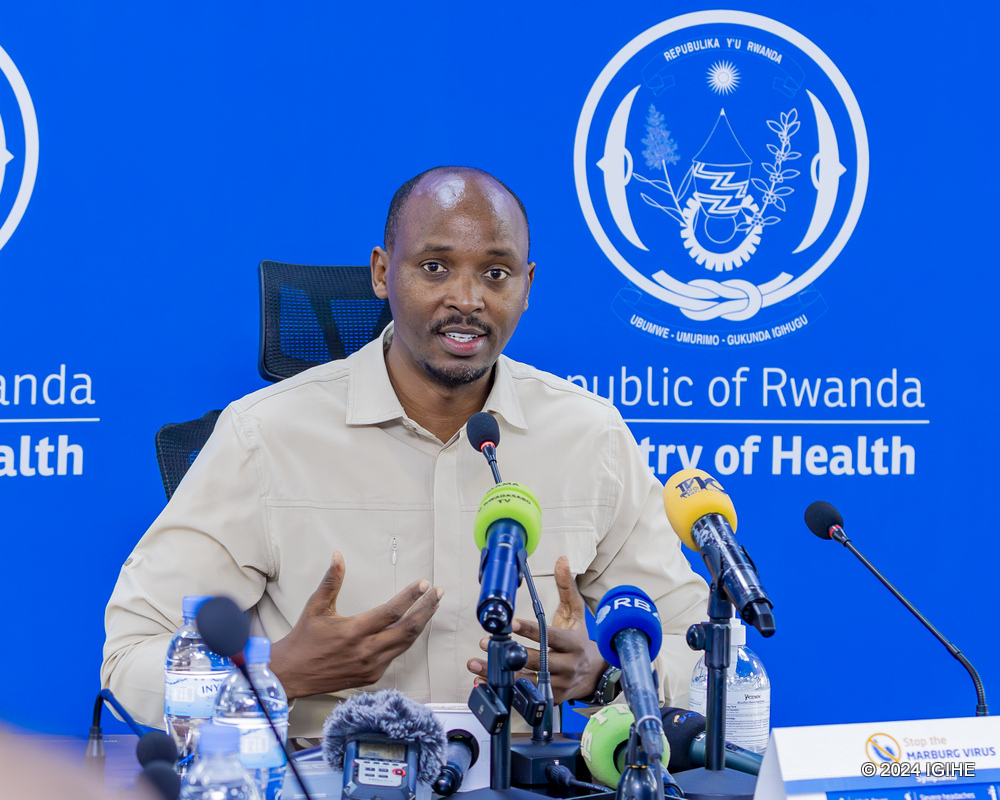The Rwandan Ministry of Health announced on Friday, November 8, that two patients who had been undergoing treatment for Marburg Virus Disease (MVD) have fully recovered. This marks a significant milestone, bringing the total number of recoveries in Rwanda’s first Marburg outbreak to 51, with no new cases reported since October 31.
Since the outbreak began on September 27, MVD has claimed 15 lives out of 66 confirmed cases in the country. No new fatalities have been reported since October 15, signaling a possible decline in the spread of the virus. In a weekly update, the Ministry of Health noted that the outbreak is “under control and surveillance continues,” though the situation remains closely monitored.
According to health authorities, the outbreak can be declared officially over if no new infections are detected for 42 consecutive days—equivalent to two full incubation periods of the virus—following the last reported case. The latest scientific data from Nature has reinforced this timeline for control measures.
Genomic sequencing traced the outbreak’s origin to contact between humans and Egyptian fruit bats in a cave used for mining activities. MVD, a highly contagious disease similar to Ebola, is transmitted to humans by fruit bats and causes severe hemorrhagic fever. Symptoms include intense headaches, fatigue, vomiting, and diarrhea, often progressing rapidly.
Rwanda’s response to this outbreak has been notably effective, achieving one of the lowest fatality rates recorded for MVD outbreaks. Approximately 22.7% of patients in Rwanda have died, significantly lower than the fatality rates of up to 88% seen in past outbreaks. This makes it the third-largest outbreak on record in terms of confirmed cases but with one of the lowest mortality rates.
The Rwandan government has implemented extensive public health measures and contact tracing efforts to contain the virus, which have likely contributed to the lower-than-average fatality rate. Health authorities and international partners continue to work closely to monitor potential cases and support recovery efforts across the nation.



